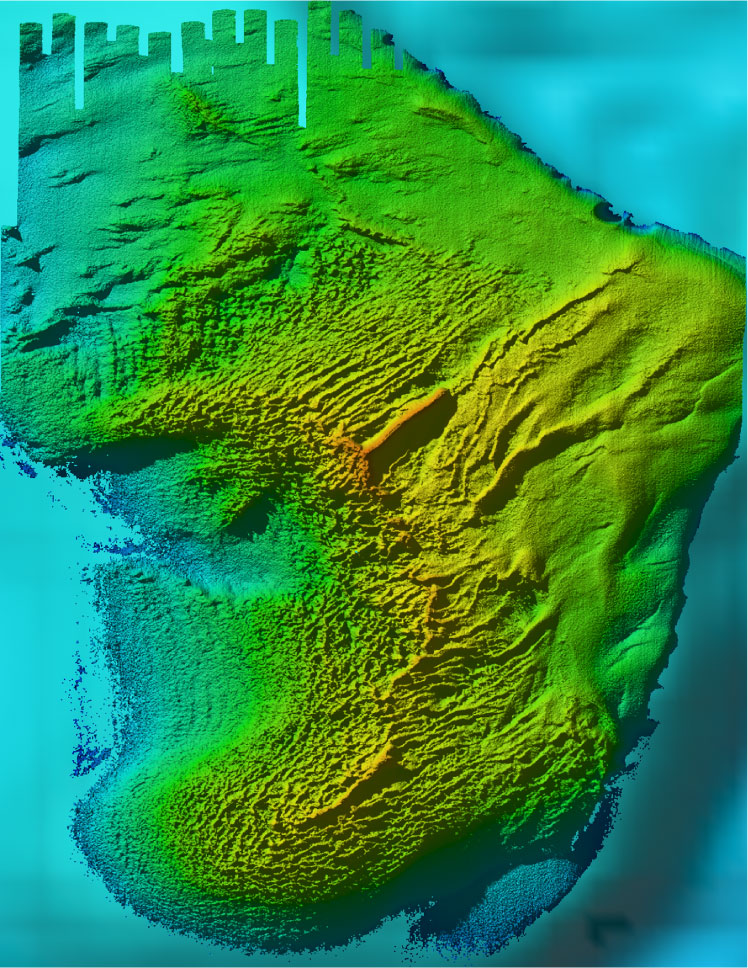Open-File Report 03-120
|
Figure 3.1 - Shaded relief map of Gull Island Reef. The morphologies are similar to those at Boulder Reef, with the rough relief related by video data to cobble and boulder substrate with less than a meter of local variation. (Greg Kennedy, personal communication) The arcuate shape to the shallowest portions of the reef suggest derivation from a small lobe of ice moving eastward. This contrasts with the southward ice motion suggested by the morphology at Boulder Reef. Erosional or depositional ridges and channels radiate outward to the northeast from the shallowest (3m) portion of the reef, including a pronounced 1 km long and straight ridge at the shallowest part of the ridge. Along the north and east edges of the reef smoother morphologies and bottom sample suggests a modern sand sheet drapes the substrate. Morphologic expression (such as along strike bedding and intraformational boundaries) of the presumed underlying Detroit River Group and Bois Blanc Formation (Fig. 1.1) are not obvious. |
